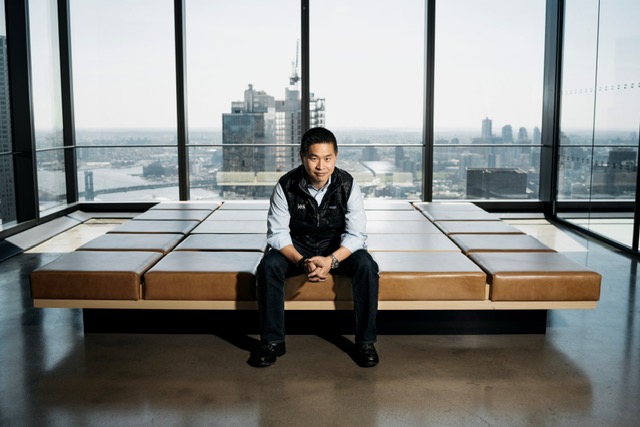When you watch a commercial for one of the major stock exchanges, you are welcomed into a world of fast-moving, slick images full of glistening buildings, lush crops and happy people. They are typically interspersed with shots of intrepid executives veering out over the horizon as if to say, “I’ve got a long-term vision, and the exchange where my stock is listed is a valuable partner in achieving my goals.” It’s all very reassuring and stylish. But there’s another side to the story.
I have been educated about the realities of today’s stock exchange universe through recent visits with Brad Katsuyama, co-founder and CEO of IEX (a.k.a. The Investors Exchange). If Katsuyama’s name rings a bell, and you don’t work on Wall Street, it’s likely because you remember him as the protagonist of Michael Lewis’s 2014 best-seller, Flash Boys: A Wall Street Revolt, which explored high-frequency trading (HFT) and made the case that the stock market was rigged, really badly.
Five years later, some of the worst practices Lewis highlighted are things of the past, and there are several attributes of the American equity markets that are widely admired around the world. In many ways, though, the realities of stock trading have gotten more unseemly, thanks to sophisticated trading technologies (e.g., microwave radio transmissions that can carry information at almost the speed of light), and pitched battles among the exchanges, investors and regulators over issues including the rebates stock exchanges pay to attract investors’ orders and the price of market data charged by the exchanges.
I don’t claim to be an expert on the inner workings of the stock market, but I do know this: Likening the life cycle of a trade to sausage-making is an insult to kielbasa. More than ever, trading is an arcane, highly technical and bewildering part of our broader economic infrastructure, which is just the way many industry participants like it: Nothing to see here, folks.
Meanwhile, Katsuyama, company president Ronan Ryan and the IEX team have turned IEX into the eighth largest stock exchange company, globally, by notional value traded, and have transformed the concept of a “speed bump” into a mainstream exchange feature.
Despite these and other accomplishments, IEX finds itself in the middle of a vicious battle with powerful incumbents that seem increasingly emboldened to use their muscle in Washington, D.C. What’s more, new entrants, such as The Long-Term Stock Exchange and Members Exchange, are gearing up to enter the fray in US equities, while global exchanges such as the Hong Kong Stock Exchange seek to bulk up by making audacious moves like attempting to acquire the venerable London Stock Exchange.
But when you sell such distinct advantages to one group that really can only benefit from that, it leads to the question of why anyone would want to trade on that market. It’s like walking into a playing field where you know that the deck is stacked against you.
As my discussion with Katsuyama reveals, IEX may have taken some punches in carving out a position for itself in this high-stakes war characterized by cutting-edge technology and size. However, the IEX team remains girded for battle and confident that it can continue to make headway in offering a fair and transparent option for market participants over the long term.
Gregg Schoenberg: Given Flash Boys and the attention it generated for you on Main Street, I’d like to establish something upfront. Does IEX exist for the asset manager, the individual, or both?
Brad Katsuyama: We exist primarily for the asset manager, and helping them helps the individual. We’re one step removed from the individual, and part of that is due to regulation. Only brokers can connect to exchanges, and the asset manager connects to the broker.
Schoenberg: To put a finer point on it, you believe in fairness and being the good guy. But you are not Robinhood. You are a capitalist.
Katsuyama: Yes, but we want to make money fairly. Actually, we thought initially about starting the business as a nonprofit, But once we laid out all the people we would need to convince to work for us, we realized it would’ve been hard for us to attract the skill sets needed as a nonprofit.
Schoenberg: Do you believe that the US equity market today primarily serves investors or traders?
